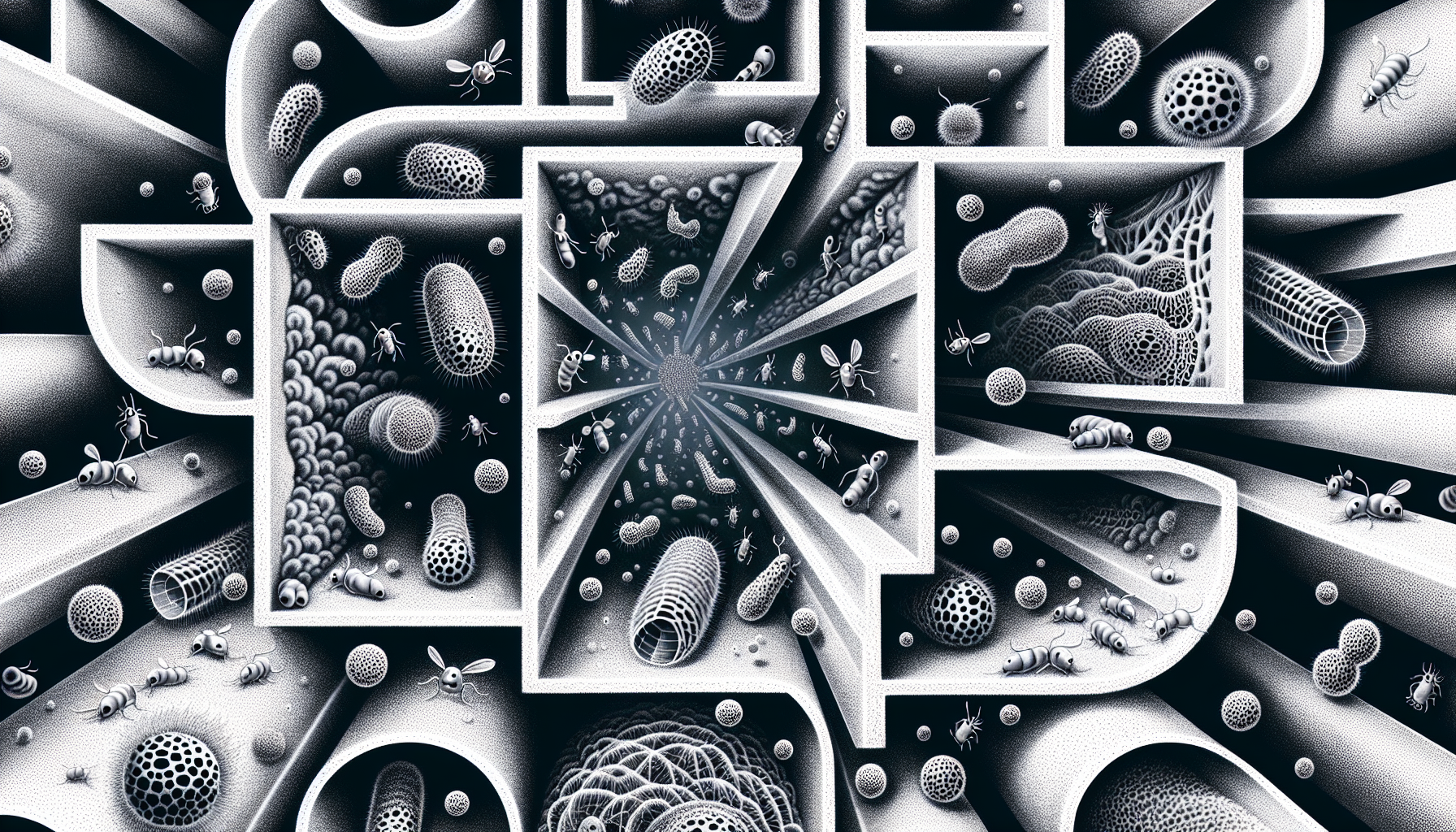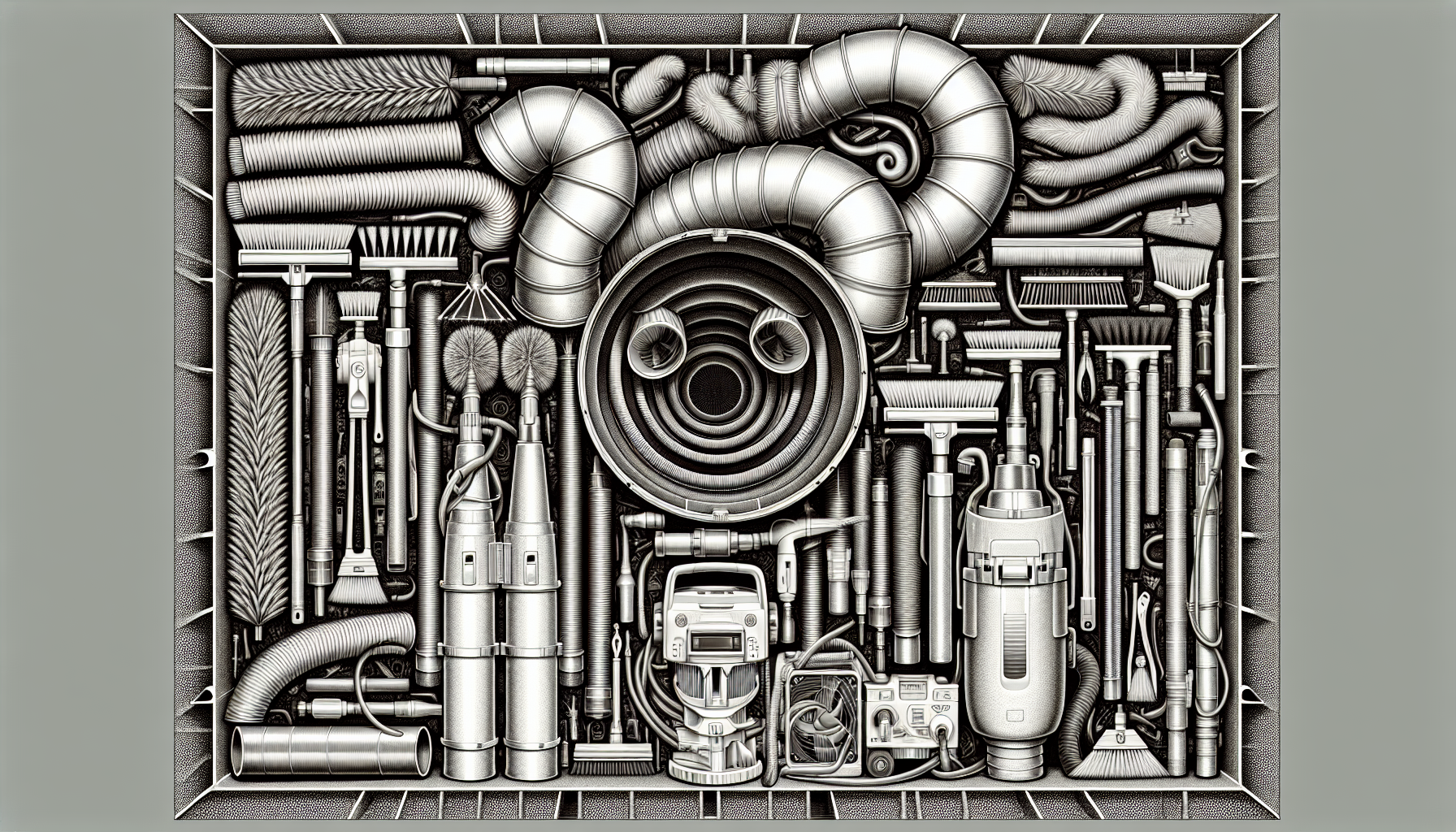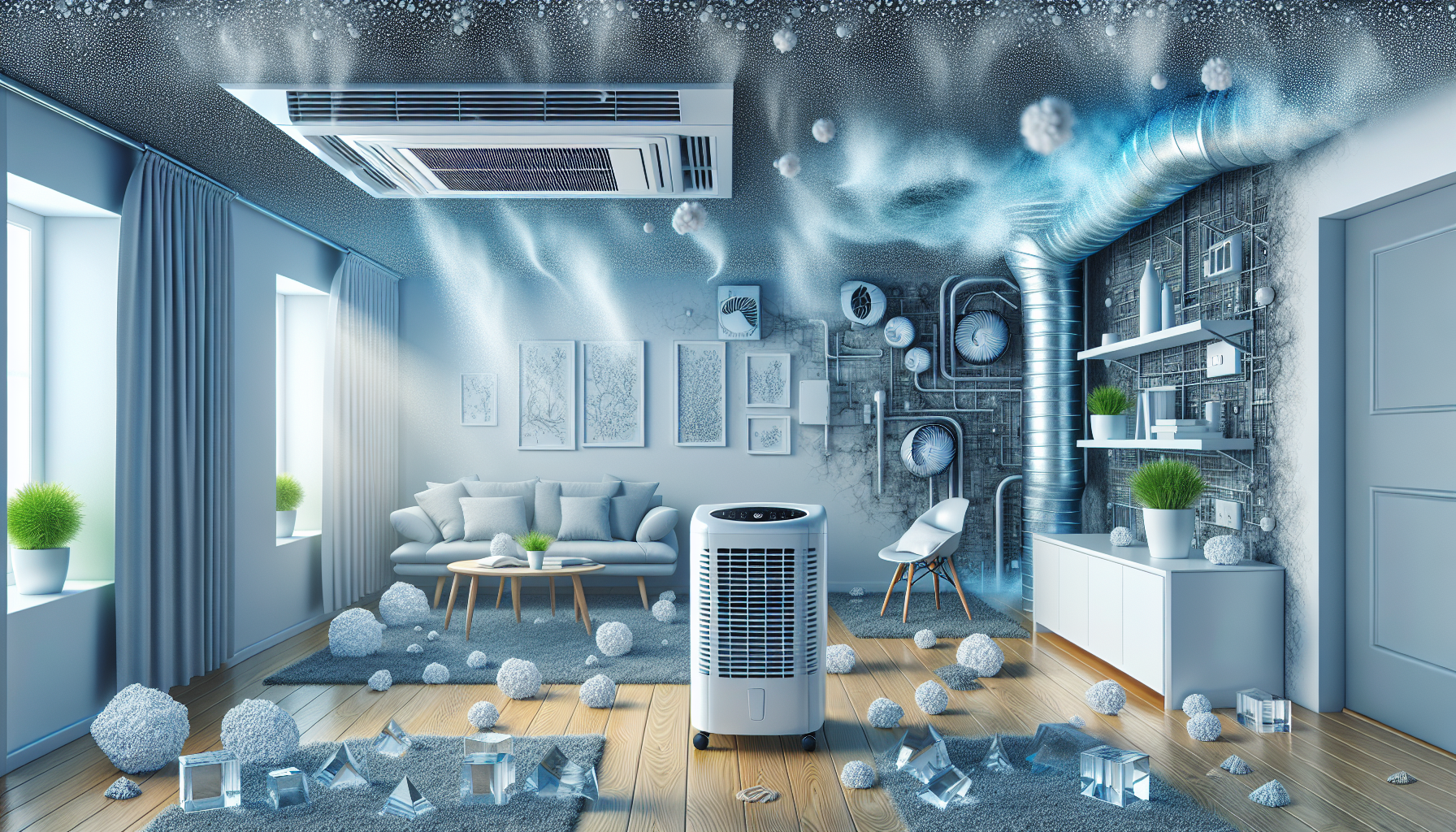Searching for Expert Cape Coral AC Repair? Discover Reliable Cooling Solutions
Will air duct cleaning remove mold from your ventilation system, safeguarding your indoor air quality and health? This article tackles the question head-on, providing a no-nonsense, direct look at the effectiveness of air duct cleaning in eliminating mold. Prepare to be informed about the methods used, warning signs of mold, its health impacts, and how to maintain a mold-free environment after a full duct cleaning service is done.
Key Takeaways
-
Air duct cleaning is essential for removing mold, preventing its spread, and ensuring a healthy living environment by addressing factors like moisture, temperature, humidity, and poor ventilation.
-
Health risks associated with mold in air ducts include respiratory distress, allergies, and infections. Mold can also cause structural damage to HVAC systems and homes, making professional cleaning and maintenance vital.
-
Professional air duct cleaning with specialized tools and expertise is recommended every three to five years, and prevention strategies like controlling humidity and regular HVAC maintenance can help keep air ducts mold-free.
The Importance of Air Duct Cleaning for Mold Removal

The process of air duct cleaning, which involves meticulous attention to the various components of our heating system and cooling systems, is vital in combating unseen dangers. This critical service provided by an air duct cleaning company ensures that our living environments remain healthy through the eradication of mold and a reduction in dust circulation. Ensuring our air ducts are regularly cleaned halts the spread of mold spores throughout our abode, fostering better health for ourselves and those we cherish.
Finally, allowing uncleaned conduits can serve as fertile ground for mold presence due to persistent moistness combined with warm surroundings—elements conducive to such harmful microorganisms’ proliferation inside your climate control pathways. Hence it becomes imperative to engage specialized services adept at eradicating potential threats thereby safeguarding you against dangerous airborne entities resulting from disregarded sanitation.
Detecting Mold in Your Air Ducts

It is crucial to maintain clean air ducts, and recognizing mold presence within them can be done by observing for visible signs. These may include dark spots, damp patches, or a slick surface inside the air ducts— all of which should not be overlooked as they are clear indications of mold growth. A distinct musty smell often accompanies these visual cues, a musty odor often signaling that your air ducts might have become a breeding ground for mold.
Experiencing certain health complaints such as headaches, nasal irritation throat discomfort and any respiratory problems could suggest that there’s an issue with how mold grows in your air duct system. Mold tends to grow in environments where moisture builds up along with conditions like warm temperatures, elevated humidity levels, and insufficient ventilation.
To prevent widespread issues with visible mold in the ductwork, it’s important to monitor factors such as air quality testing such as moisture content closely so you can identify potential problems early on. When evidence of significant visible growth appears or you detect that telltale odor associated with mouldiness rapidly engage professional cleaning services aimed at restoring the quality of your indoor air.
Visual Inspection
Inspecting air ducts visually is crucial for identifying the presence of mold. Different molds, including:
-
Black mold (Stachybotrys chartarum)
-
Acremonium
-
Ulocladium
-
Alternaria
Can be distinguished by their unique looks and textures discernible during an examination. For example, black mold often manifests as a darkly colored substance in shades of greenish-black or black with a slimy consistency. Conversely, Acremonium usually takes the form of white powder.
The appearance of Ulocladium can vary from brown to gray or even black and it might have a texture similar to suede, woolen fabric, or cotton fibers. On the other hand, Alternaria tends to present itself with hues ranging from green to brown along with a velvety feel upon touch. Being acquainted with these visual cues proves immensely beneficial when checking your ductwork for signs of mold growth.
Professional Air Duct Cleaning for Mold Removal

Professional air duct cleaning service is the optimal solution for effective mold eradication. Professionals are equipped with advanced tools, methods, and knowledge to comprehensively eliminate mold as well as various pollutants, thus preserving a healthy indoor air environment. Ensuring that the HVAC system’s ducts undergo regular professional maintenance is crucial not just for removing existing mold, but also in preventing its formation.
It’s advised to have your air ducts professionally cleaned every three to five years to sustain adequate airflow and avert the buildup of moisture which can lead to mold proliferation. To confirm that each part of ac ducts and the HVAC system has been effectively cleansed following professional service, either an exhaustive visual evaluation or a remote camera inspection should be conducted.
Proper Equipment and Techniques
The practice of air duct cleaning involves using specialized equipment and strategies to eradicate mold and enhance the overall quality of indoor air. This process frequently engages brushes, potent vacuums, and specific sanitizing techniques designed for extracting mold. In substantial remediation efforts, experts and duct cleaning service providers deploy double-layered polyethylene sheeting as a containment measure and establish negative pressure within the work area to curtail mold spore dispersion into other sections of the environment. Providers offering duct cleaning services play a critical role in sustaining an atmosphere conducive to good health.
These sophisticated tools along with proper containment measures depend on the skills of well-trained technicians for their effectiveness. Such professionals are adept at gaining entry to and meticulously purifying air duct systems, guaranteeing extensive cleansing coupled with testing for overall air quality that results in decontaminated fresh home airspace.
HVAC Training and Expertise
Hiring a mold remediation company such as Air Necessity is crucial when it comes to dealing with mold growth in HVAC systems, as the process demands specialized skills and understanding that go beyond common knowledge. These experts deploy a range of techniques and approaches tailored to address the wide variety of scenarios encountered during mold removal – this expertise guarantees comprehensive cleaning.
Experience plays an indispensable role in providing quality judgment needed for handling distinctive cases within mold remediation processes. This emphasizes the significance of professional proficiency since attempting DIY methods without adequate know-how can result in subpar cleanup efforts and subsequent return of mold issues, which underlines why expert involvement is imperative for effective resolution.
Mold Growth Inhibitor Products
Professionals meticulously apply inhibitors to control mold growth after they clean the air ducts, aiming to stave off the Development of the mold problem. These preventative solutions are formulated specifically for maintaining a mold-free state in your ducts and thus prolonging the effects of the cleaning session. When opting for chemical biocides as an antimicrobial treatment, technicians make sure that actual visible signs of microbial infestation are present before proceeding with the application to address the issue precisely.
When it comes time to administer these inhibitory substances against mold growth, stringent safety measures are followed. This precautionary approach is vital not just for effective disinfection, but also for preventing any unwanted risks associated with their use. By adhering to such rigorous protocols, specialists contribute significantly toward keeping your household clear from future instances of mold invasion, enhancing overall indoor air quality and comfort.
Preventing Mold Growth in Air Ducts

Preventing mold growth in air ducts is as critical as its removal. To significantly diminish the chances of mold forming in your ductwork, you should control indoor moisture levels, eliminate water leakage points, and regularly service your HVAC system. Key methods to prevent mold include:
-
Utilizing a dehumidifier to maintain low humidity indoors which discourages the presence of mold.
-
Repairing any leaks or sources of dampness promptly to inhibit initial mold formation.
-
Ensuring consistent cleaning and upkeep of your HVAC unit for optimal airflow and reduced potential for mold infestation.
By putting these preventative measures into practice, you can protect against the proliferation of mold within your air vents, thereby ensuring a healthier atmosphere inside your dwelling.
Enhancing insulation around ductwork, installing better attic insulation, and integrating additional attic vents can be instrumental in managing indoor moisture levels thus curtailing condensation buildup. Making certain that the air vent is not blocked also promotes appropriate circulation reducing the Possibility of moist areas where molds may take hold Your proactive stance toward these preventive actions will greatly aid in keeping away from an encroachment by mold on your home’s interior space promoting well-being among occupants.
Controlling Moisture and Humidity
Regulating moisture levels is essential for averting the proliferation of biological entities within air ducts. Keeping the humidity inside between 35 and 50 percent greatly aids in deterring the development of mold within these duct systems. Employing a humidity gauge can facilitate adherence to this optimal range.
Deploying dehumidifiers helps reduce household moisture content, thus inhibiting mold formation in the ductwork. Utilizing products that absorb moisture can contribute to preserving reduced indoor humidity as well as air conditioning. Through vigilant management of both moisture and atmospheric dampness, an inhospitable climate for mold propagation can be established, safeguarding both your dwelling and your well-being.
Regular HVAC Maintenance
Maintaining your HVAC system regularly is vital to decrease the likelihood of mold proliferating within your air ducts. Engaging in professional air duct cleaning as an integral aspect of routine maintenance enhances airflow, contributing to even temperature distribution across your residence and thereby curbing moisture buildup inside the ductwork.
The comprehensive benefits derived from ongoing maintenance of your HVAC system comprise:
-
Preventing mold
-
Elevating indoor air quality
-
Boosting the efficiency of the system
-
Augmenting Home Comfort Levels
Committing to consistent maintenance for your HVAC unit ensures a living environment that is free from mold, promoting health and comfort within your household.
Summary
To summarize, the importance of keeping air ducts clean is paramount for both our health and home stability. Recognizing mold growth hazards, identifying it promptly, utilizing professional air duct cleaning services to eliminate these threats, and adopting preventive practices are essential in protecting our dwellings from this stealthy threat. It’s critical to act now to guarantee a home environment that is free of mold—promoting healthiness and comfort for us and those we care about.
Frequently Asked Questions
How can I tell if there is mold in my air ducts?
Should you detect an increase in allergic responses, respiratory issues, higher energy costs, or a musty smell, observe visible mold growth, encounter water leaks or condensation, experience the inadequate performance from your HVAC system, or notice excessive humidity, these may be signs that mold has infested your air ducts.
Can mold in ductwork be cleaned?
Indeed, it is possible to cleanse mold from ductwork by meticulously cleaning the impacted areas using a solution composed of one part bleach to sixteen parts water. This same mixture should also be used for immersing the air vents duct cleaners.
To eradicate any residual mold spores, it is advised to use a HEPA vacuum cleaner on the air vents as well.
How often should I have my air ducts cleaned?
To make air conditioners ensure optimal airflow and avert the buildup of moisture, it is advisable to get your air ducts cleaned by professionals every three to five years.
Doing so will aid in thwarting the growth of mold within the ductwork.
What are the health risks associated with mold in air ducts?
The presence of mold within air ducts can intensify allergic reactions, worsen respiratory ailments and be the catalyst for a range of health problems including infections of the skin and nails. More severe conditions such as endocarditis and pneumonia can also result from exposure to mold in ducts.
Promptly tackling mold found in air ducts is crucial in order to reduce these potential health hazards.
What preventive measures can I take to prevent mold growth in my air ducts?
To inhibit mold proliferation within your air ducts, it is crucial to control indoor humidity, tackle any causes of moisture intrusion, and engage in consistent upkeep of your HVAC system.
By taking these steps, you will assist in maintaining an environment inside the ductwork that is devoid of mold.
